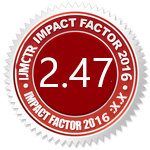Abstract :
A Microstrip patch antenna design is characterized and optimized using HFSS antenna simulation software. In this thesis we will see the effects of EBG structures with Microstrip patch antenna. Microstrip patch antennas became very popular because of ease of analysis and fabrication, and their attractive radiation characteristics. But also, they have some drawbacks of low efficiency, narrow bandwidth and surface wave losses. We will discuss only about surface waves and its losses. In order to overcome this limitation, EBG (Electromagnetic Band gap) Structures are inserted in the Microstrip Patch Antenna and due to this MS Antenna performance is improved. These periodic structures have the unique property of preventing the propagation of electromagnetic waves for specific frequencies and directions. The aim of this project is to design and simulate the new EBG structures operating at 2.4GHz resonant frequency and study the performance of the rectangular Microstrip patch antenna with and without EBG structure. The substrate material is changed from RT Duroid (material in nominal HFSS design) to FR4 due to lower cost and availability. The operating frequency is changed from 2.3GHz (specified in nominal HFSS design) to 2.4GHz for wireless communication applications. Required dimensional adjustments when changing substrate materials and operating frequencies for this antenna are non-trivial and the new design procedure is used to tune the antenna. The experimental results are compared to theoretical predictions. The results show that the new design procedure can be successfully applied to Microstrip patch antenna design.



